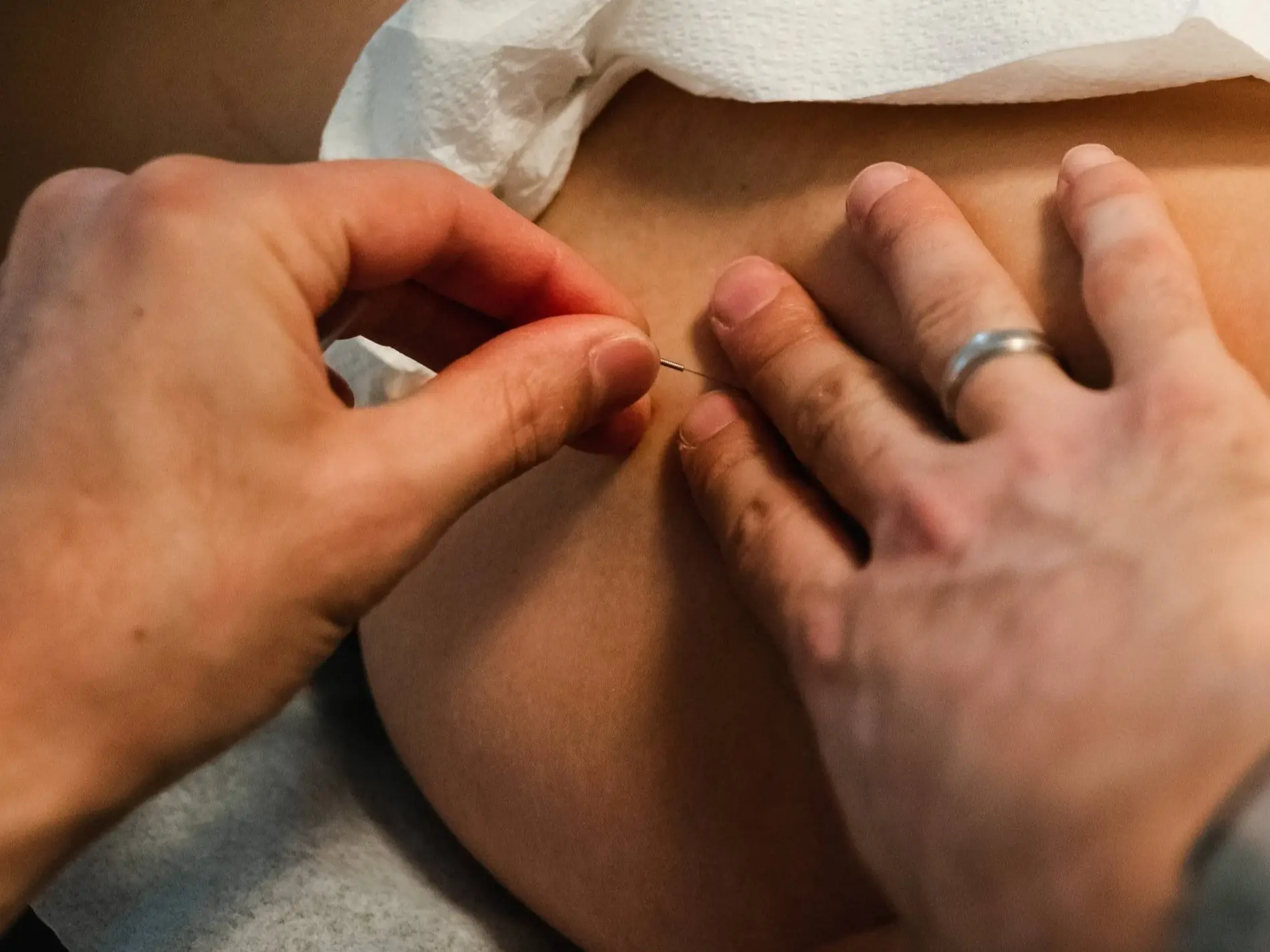If you’ve ever felt a nagging tightness or deep ache in your hip that just won’t quit, chances are your hip flexors are throwing a fit. You’ve foam rolled. You’ve stretched. You’ve tried heat, ice, maybe even massage—but nothing sticks. Sound familiar? Yeah, we’ve been there too. That’s where dry needling comes in—a not-so-new technique that’s now getting a lot of traction in the pain relief world.
At TruStrength, we work with a ton of athletes, weekend warriors, and desk warriors (because yes, sitting too long will mess you up too). One of the most overlooked causes of hip discomfort? Trigger points in the hip flexor muscles, especially the infamous psoas and iliacus. Dry needling targets those trigger points in a way most other treatments just can’t reach.
What’s the Hip Flexor and why It Hurts So Bad
The hip flexors are a group of muscles that allow you to lift your knee, bend at the hip, and basically move like a human. The two main players here are:
- Psoas Major: Originates from your lower spine and attaches to the top of your femur.
- Iliacus: Comes off the inner part of your pelvis and joins the psoas to insert into the femur.
Together, they’re called the iliopsoas, and they’re crucial for everyday activities—walking, running, squatting, you name it.
So when these muscles tighten up or develop trigger points, it can cause localized pain in the front of your hip, radiating pain into your groin, or even refer discomfort into your lower back. The worst part? You might not even feel the tightness until you try to stretch or get up from sitting—and then it hits.
Common Causes of Hip Flexor Pain
Understanding why your hip flexors are acting up is step one in fixing the issue. Here’s what might be fueling the fire:
1. Injuries and Overuse
Runners, lifters, and athletes often overuse their hip flexors, especially if the glutes aren’t pulling their weight. Sprinting, kicking, or high-intensity lifting without proper mobility work can strain these muscles fast.
2. Postural Imbalances
Let’s talk desk jobs. Sitting all day causes your hip flexors to remain in a shortened position. Over time, they adapt—and not in a good way. Your body ends up with anterior pelvic tilt, where your hips roll forward, making your lower back and hips do more work than they should.
3. Medical Conditions
Conditions like hip labral tears, arthritis, or femoroacetabular impingement (FAI) can all irritate the hip flexor region either directly or indirectly. You may feel symptoms in your hip even when the root cause is deeper in the joint.
4. Lifestyle and Weak Core
Lack of strength and stability in the core and glutes forces the hip flexors to compensate. Over time, this leads to chronic tension and even inflammation.
5. Nerve Entrapment
Sometimes, it’s not just the muscle—it’s the nerves. The femoral nerve, which runs through the hip area, can get irritated or compressed, mimicking muscle pain.
Diagnosing Hip Flexor Dysfunction
So how do you know if your pain is coming from the hip flexors—or something else entirely?
Self-Assessment
Lie on your back and pull one knee into your chest. If the opposite leg lifts off the ground instead of staying flat, your hip flexors are probably tight (that’s called the Thomas Test). You may also feel pain when trying to extend your hip behind you.
Professional Evaluation
At TruStrength, we run a full mobility and strength screening. We also use palpation and muscle length tests to assess your iliopsoas and rule out joint or nerve issues.
Red Flags (When to See a Pro ASAP)
- Pain radiating down your leg
- Numbness or tingling
- Sharp, stabbing pain with every movement
- No relief from stretching or massage
These symptoms might signal nerve involvement, labral damage, or a more serious injury. Don’t ignore them.
So, What Is Dry Needling?
Dry needling involves inserting a thin, sterile needle directly into trigger points (those knotted-up, overly-contracted muscle fibers) to reset the muscle and relieve pain. It’s not acupuncture—it’s a modern, evidence-based technique grounded in western medicine.
When a needle hits a trigger point, it causes a local twitch response—kind of like the muscle sighing in relief. This helps:
- Release muscle tension
- Improve blood flow
- Reduce nerve irritation
- Restore mobility almost immediately
In the case of the hip flexor, we target the iliacus, psoas, and sometimes the rectus femoris depending on your symptoms.
Why Dry Needling Works for Hip Flexor Pain
Most treatments—like foam rolling or stretching—can’t reach deep trigger points in the psoas. The psoas sits under your abdominal muscles and organs, making it hard to target manually.
That’s where dry needling shines. It goes deep into the tissue with precision, hitting the source of the problem rather than dancing around it. We’ve seen clients go from weeks of pain and limited mobility to nearly full range after just a few sessions.
You might feel sore for a day or two post-treatment, but that soreness typically leads to massive relief shortly after.
Other Treatment Options
Dry needling is powerful—but it’s even better when paired with a smart recovery plan. Here’s what we typically build into a full care strategy:
Home Remedies
- Heat therapy to relax tight muscles
- Gentle stretching post-needling, not before
- Massage guns for superficial tension (not deep trigger points)
Physical Therapy
We include strengthening exercises for glutes, core, and hamstrings. If your hip flexors are overworked, it’s usually because something else isn’t working hard enough.
Medical Interventions
If dry needling and rehab don’t make a dent, we might refer you for imaging or work with your physician on possible injections or further diagnostics. But honestly, that’s rare. Most cases respond well to movement and muscle therapy.
How to Prevent Hip Flexor Pain in the First Place
Nobody wants to live on a treatment table. Here’s how to bulletproof your hips:
- Move often: If you sit for work, get up every 30–60 minutes and walk around.
- Strength train smart: Don’t skip glute bridges, step-ups, or core work.
- Stretch wisely: Use dynamic warm-ups before activity and static stretches afterward.
- Breathe better: Diaphragmatic breathing reduces overuse of the psoas.
- Stay hydrated: Dehydrated muscles cramp and spasm more often.
We’ll show you how to build a custom plan at your session, especially if this is a recurring issue for you.
The Bottom Line: Book Dry Needling at TruStrength Today
Hip flexor pain doesn’t have to be your new normal. Dry needling offers a direct, effective way to hit those deep-rooted trigger points that stretching and massage miss. If you’re in pain, stuck in the same mobility rut, or feeling like nothing else has worked—it’s time to try something different.
At TruStrength, we don’t do cookie-cutter treatments. We assess the full picture and use dry needling as part of a tailored plan to get you moving pain-free again.
Ready to feel the difference? Contact us today to schedule your consultation. Let’s find the root of the issue and fix it—together.



